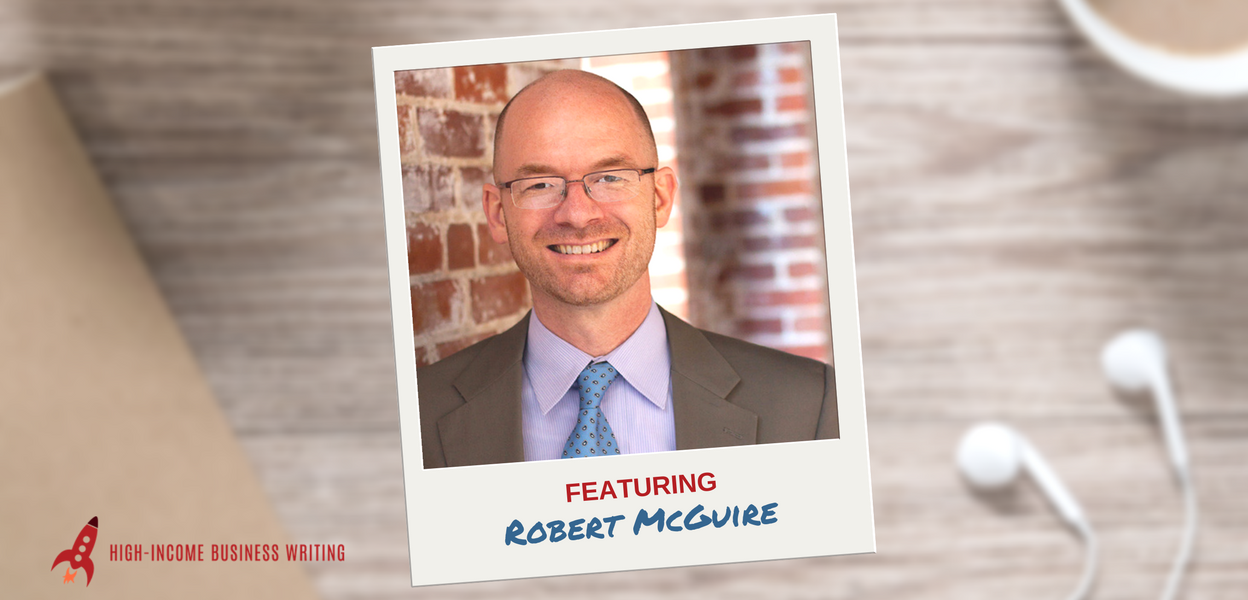When it comes to pricing, the most common question I get is, “How much should I charge for _________?”
But I don’t think I’ve ever had someone ask me, “What should my floor rate be?”
In other words, the bare minimum you should be charging on any given project to make sure you cover your full costs as a freelancer?
I’m not a fan of that kind of thinking. It’s generally an indication that you’re looking at the problem the wrong way. You’re starting your calculations from the bottom as opposed to thinking through what the professional-level rates are for your target market and working from that reference point.
But there is one exception. And that’s when you want to know and understand what your “all in” expenses are … so you can make better overall pricing decisions.
Knowing your “all in” expenses can bring some serious clarity to your pricing decisions. It can help you negotiate better and feel much more confident about quoting higher fees.
To discuss this important topic, I’ve brought my colleague Robert McGuire back to the show. Robert is president of McGuire Editorial and founder of Nation1099, an online community for solopreneurs.
No matter where you are in your writing business, this discussion will help you understand how to calculate that number for yourself—and why knowing this information will help you run a more profitable business.
The notes that follow are a very basic, unedited summary of the show. There’s a lot more detail in the audio version. You can listen to the show using the audio player below. Or you can subscribe in iTunes to get this show delivered straight to the Podcasts app on your smart phone, tablet or iPod.


High-Income Business Writing with Ed Gandia
#154: What’s the Bare MINIMUM You Should Be Charging Your Clients?
Tell us about your business today
Robert’s primary business is McGuire Editorial, a content marketing and production agency. He grew his original solo freelance business to include a team of subcontractors.
Robert also has a side project: Nation1099. This site helps freelancers close the gap between working independently and achieving financial security.
When it comes to fees, what are some of the biggest mistakes you see freelancers make?
The biggest mistake is that when determining how much to charge, they only consider the equivalent salary in an employee role. They divide this salary by 50 weeks and 40 hours a week to find an hourly rate. But this rate often isn’t even half of what they should be charging.
For example, the average salary for an experienced copywriter with seven to ten years of experience is $75,000. This works out to an hourly rate of $37.50. Charging this fee is a big mistake.
It’s also a big mistake to charge by the hour. The idea of calculating this hourly rate is to provide you with an internal reference point. Rather than charging by the hour, you should be developing projects, retainers and value-based pricing models.
Some freelancers accept lower rates because they have no external reference points for comparison.
What do you mean when you talk about “all in” expenses?
Your rate should account for all the costs an employer would incur to employ someone for the same work as well as other costs of doing business.
These costs fall into three categories:
- The actual spending that employers have to make in order to carry employees on their payroll. These include health insurance benefits, retirement benefits, and employment taxes.
- “In-kind” activities, such as working on holidays.
- Net income per employee: The income of the business divided by the number of employees.
You have a formula to figure out the minimum you should be charging. Can you walk us through it?
There are five steps to calculating the formula:
- Start with the annual salary equivalent (but don’t stop there)
- Add in the cash costs of being self employed
- Add in the cost of unpaid activities in your freelance business
- Plug estimates into the formula to set freelance rates
- Calculate the grand total.
You can find salary averages on sites such as Glassdoor and PayScale.
How do we calculate how much we should charge?
Cash costs include:
- Salary equivalent (owner’s salary)
- Retirement (approx. 15% of salary)
- Health insurance
- Marketing expenses (approx. 8% of client receipts)
- Overhead (approx. 20% of client receipts, less marketing expenses)
- Self-employment taxes (approx. 18% for federal and state)
Costs of unpaid activities include:
- Value of paid time off (approx. 40 days total for holidays, vacation and sick days)
- Value of owner’s business development activities (approx. 20% of working time)
- Value of owner’s management activities (approx. 10% of working time)
- Owner’s profit (approx. 20% of client receipts)
These numbers total to your annual expenses of running a freelance business.
You can then use them to calculate your day rate.
You can download a spreadsheet (with sample numbers) from Nation1099.
You can also find an online calculator at Nation1099.
So how does this fit with our estimated salary of $75,000?
If you plug in the estimates using a salary of $75,000, the total comes to $79.00 per hour—much more than the original hourly rate of $37.50.
This assumes annual receipts of $164,000. With this amount, you can pay your health insurance, save for retirement, pay taxes, invest back into your business and take 40 days a year in holidays, vacation and sick days.
How does this compare to some of the rule-of-thumb advice you see out there on calculating your internal hourly rate or day fee?
A common rule of thumb is to take the salary equivalent, convert it to an hourly rate and then charge two to three times that amount. Our calculations validate that rule.
This is your minimum starting point for negotiating projects fees and retainers.
Can you use these numbers to assess the viability of different projects in different target markets?
You can see how much is typically charged for certain projects, such as a white paper, and then see if that amount is viable for your business.
If market rates don’t support your minimum rates, then you have to consider whether you’re in the right market.
Sometimes freelancers feel that they have to work with a client’s budget. But it’s not your responsibility to make an arrangement that works for the client. It has to work for both of you!
If it doesn’t, you have to find and convert higher-paying clients.
At first, you may find this formula discouraging. But it should give you the confidence to believe that more is possible. You’re not crazy to think that you should be earning more than you currently are.
This doesn’t mean you’re in the wrong profession. It’s not about your skill set. It’s about having the confidence to ask for more.
Many times, freelancers with the same skill set and level of experience charge very different rates.
To get unstuck, you need:
- Mindset
- Strategy
- Execution
Consider these calculations a wake-up call.
More about Robert and Nation1099
Sample spreadsheet to calculate internal hourly rate
By the way … whenever you’re ready, here are 4 ways I can help you grow your freelance business:
1. Grab a free copy of my training class for writers who are new to freelancing.
It’s called “The 3 Magic Levers: How to Get Your Writing Business Off the Ground and Land Your First Paying Client.” — Click Here
2. Download a free copy of my book for ESTABLISHED writers/copywriters.
You’ll discover how to quickly and predictably reawaken dead leads, generate new client opportunities and convert not-yet-ready prospects into freelance writing clients. — Click Here
3. Join our “Get Better Clients Academy”
You’ll get a personalized action plan based on where you are today in your business. Plus all the tools, scripts, checklists, cheat sheets and templates you’ll need to escape feast-or-famine … grow your income … and land clients who love and respect you. — Click Here
4. Get your website DONE!
If you’ve been struggling to get your website done … or if you’re not happy with what you’ve got today… let my team and me build you a beautiful website for your writing business. We’ll do all the hard work! Email me at ed@b2blauncher.com … put “WEBSITE” in the subject line … and I’ll reply with the details.






